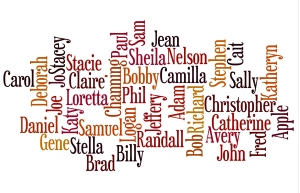Hello, fellow fence jumpers! It has been close to a year since I last stepped deep into the Cow Pasture. Like many of you have been caught up in the strange world of Covid-19, the quarantines, rules, regs, and controversies. It feels as if I have stepped from my world onto another planet.
Uncertainty, fear, isolation, social unrest, censorship, confusion, and even a cultural war have dominated the past year. All of which, looking through a writer’s eye, would make a great start to a sci-fi novel.
So, I sat back and thought about what was happening. The first thing I noticed was how superficial we had become.
Fear does strange things to people. It makes some of us vulnerable, some of us dig down and find our courage and push through, and others become opportunists. The vulnerable retreat to safety to wait out the worst; the courageous push forward and find ways through the challenges, and the opportunistic exploit and take advantage of the situation. It is the opportunists narrative we hear the loudest. And as a result, we stop listening, talking, or hearing each other. We hunker down in homes, groups, or “tribes,” throw ourselves into survival mode, and all the while our world vision narrows to the point we could no longer see others. Really see them.

We have become a nation of paper cut-out people, flat characters who define each other by our most basic and outward traits. Most notably, the color of our skin, political affiliation, or the values we espouse. But, as writers, we know that people are not flat. They are not just a color of skin, or a profession, or gender, or any of those outward characteristics, traits, or appearance.
When writers begin the process of character development outward, physical characteristics such as height, weight, gender, hair/eye color, dress, and so on are the things that we build upon to create living characters. But at that point, all we have is a paper cut out, a sketch. It is by no means the sum of the personality we are developing. We research, plot, plan, and delve into the revealing, intricacies, and intimate details that make our character a person. We want to know what makes them tick, why and how they make decisions, what influences them, or what makes the character act or curl up in a ball. We want to know their biases, preferences, desires, hopes, dreams, deep dark secrets, and the history of their failures. Those things make our character come to life, leap off the pages of our story, and relatable.
Despite all the challenges we’ve faced in the past year, it became clear to me what we need to do. First, we should never give in to the temptation to see others through the lens of what they look like or what group they belong. Each of us is a whole, complex person, made up of our unique life experiences. You can’t tell that by looking at someone from the outside. Two, we should always refuse to accept the narrative of superficial labels. Three, make it a mission to get to know people.
We live in a beautiful free country where every individual deserves respect and to be seen as a whole person. A character of their own making and the way they look is just the beginning. They have a history, an intimate story to tell, complexities unseen by our eyes. But when we take the time to speak to each other, to talk, and to listen, to really listen, we often discover a friend.
As writers, we always strive to be better writers. As one of the millions of characters in this big beautiful world we inhabit together, we should expect nothing less of ourselves than to strive to be a better person. Look beyond watch you see. Dig deeper, reach out your hand and make a new friend. After all, we’re in this together.
I’d love to hear your comments. Talk to me. Tell me your story. I’m all ears and look for me on my Facebook Pageat SheilaMcIntyreGood,Pinterest, Bloglovin, Twitter@sheilamgood, Contently, and Instagram. You can follow my reviews on Amazon and Goodreads.


 “What’s in a name?
“What’s in a name?